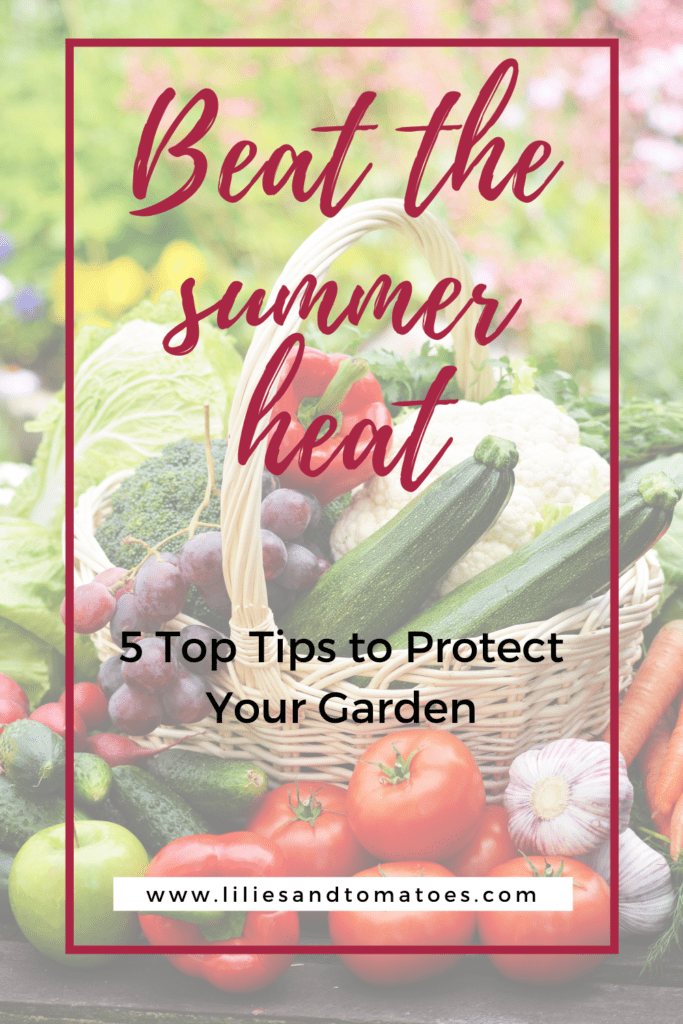
Summer is peak productivity time for your garden. Hurray! But the extreme summer heat can wreak havoc on your garden. Boo! Here are the top 5 ways that I protect my garden without jumping through a lot of hoops.
#1 Mulch
Table of Contents
The first tip is the best tip, use mulch. Mulch is a layer of covering for the soil. It protects the roots from heat or cold, retains moisture, prevents weeds from taking over your garden. Mulch works whether you are growing in the ground or in containers
Mulch can be made out of many things. Some of the most common are plastic sheeting, agricultural fabric, straw, wood chips, and leaves.
Make sure that you do not over-mulch your plants and that you leave space for seedlings if you are directly sowing into a bed or container covered in the mulch.
Mulch will give you the most bang for your buck. Of all the tips on this list, mulch is the most important.
#2 Sunshades
The next tip on the list is sunshades. Sunshades can be made out of anything. They shade the sun. A store-bought version will be made out of a net type fabric. The weave of the net will be tighter or looser depending on the level of shade provided.
You can also use sheets or old fabric that you already have at your house as sunshades. If you plan to go the fabric route, tulle or organza will make a fine choice but these are short term solutions. For the long term, you want a material that is UV stable. UV stable fabric will last longer in your garden.
In my garden, I use 3 different items like sun shades. I set them up when the temps are forecasted to be 90℉ (32℃) or above.
This is not a “set it and forget it” option, just a “my plants didn’t die during the last heatwave” option.
First
On my deck, I use my patio table umbrella. I open it as wide as possible. It provides morning shade to the plants on the right (western) side of my deck. It provides afternoon shade to the plants on the left (eastern) side of my deck.
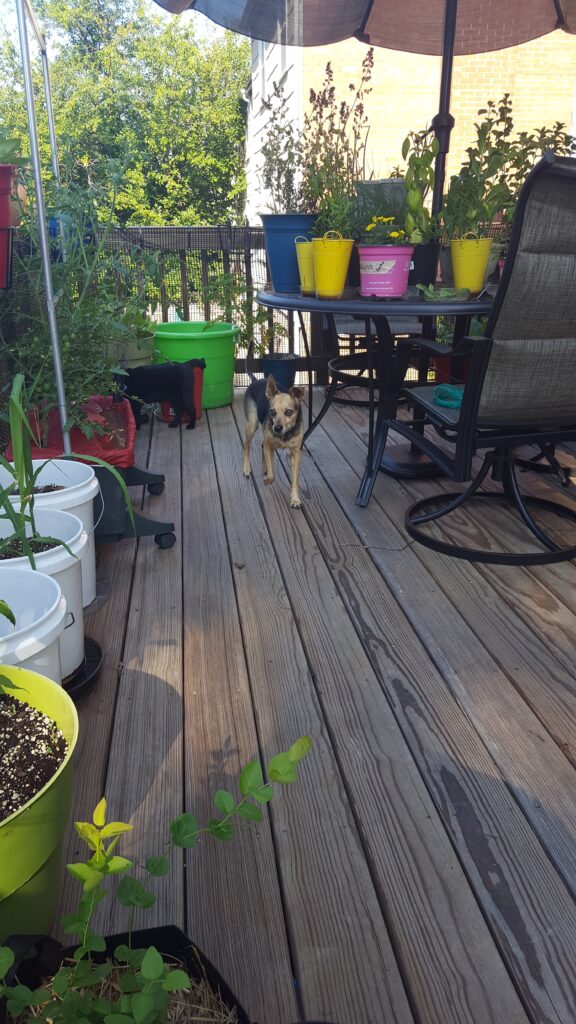
Second
In my yard, I use a sunshade that I originally bought to go with a kennel for my dog. I wasn’t using it for my dog. Waste not want not. This is a green mesh fabric. It is attached to my fence and one of the posts that hold up my deck with zip ties, hooks, and eyes. It is easy to set up and takedown.
Third
The third type of sunshade that I use, I bought specifically for that purpose. I use it the same way at the dog kennel cover. I needed something that I could hang in between my fence and my deck.
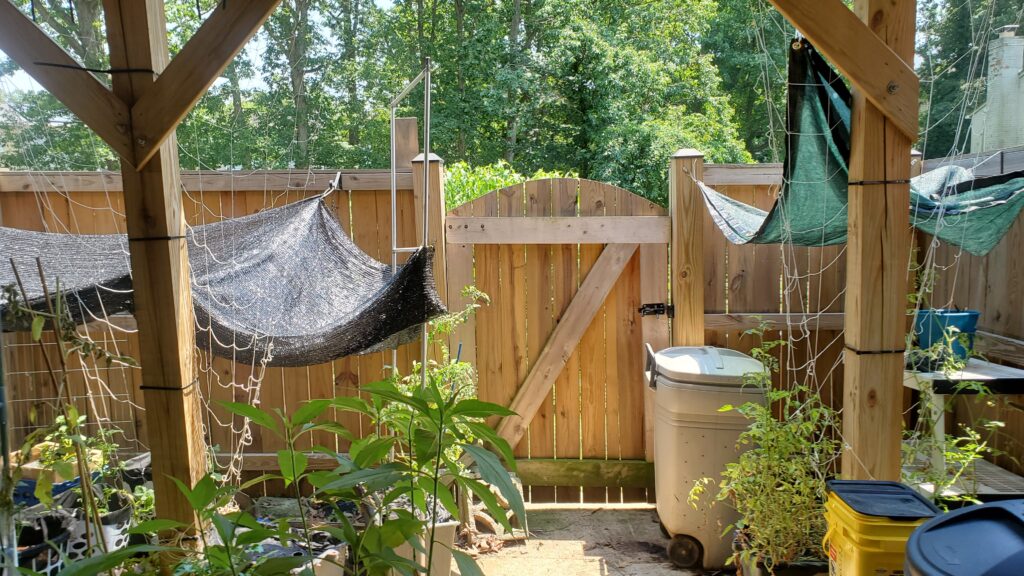
The two sunshades that I use in my yard protect plants directly under them in June, July, and August. They also protect the plants that are under my deck in April, May, September, and October when the sun is hitting my yard at a different angle. This fabric is a lifesaver for my plants. Here it is on Amazon if you want to check it out.
If you are going to mount your sun shades horizontally, you want to make sure that your plants have enough room to grow vertically without hitting the sun shades. You can also use sun shades on hoops over your garden or create a vertical wall using the sun shades.
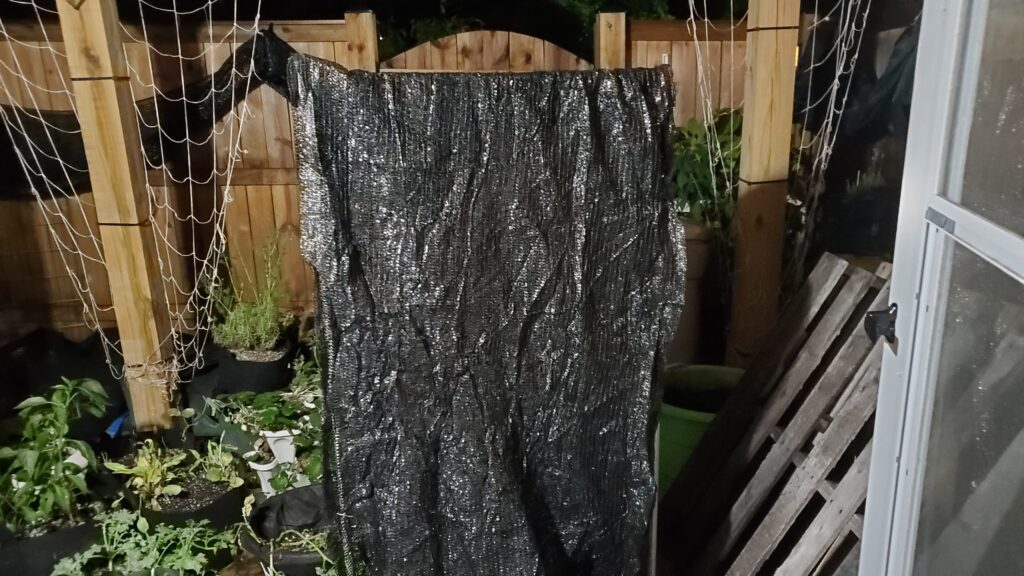
If you want to go with the vertical wall option, something portable would be ideal. Generally speaking, setting the wall on the south side of your plants will provide shade. This will depend on how your garden is oriented towards the sun. Remember that the sun will change positions in the sky during your growing season so adjustment may be necessary.
#3 Deep Watering
The third way that you can protect your garden from extreme summer sun is deep watering. Deep watering is when you water slowly to ensure that the water penetrates deep into the soil or all the way through your containers.
Drip irrigation is the ideal way to accomplish this for an in-ground garden. You have control over the pressure. When you turn on your drip system you can do something else while the water slowly soaks into the ground.
For my container garden, I achieve this two different ways. In a plastic pot, I water slowly until I can see water come out of the bottom of the pot.
In a fabric pot, I add water to the drip tray until the water wicks all the way up to the top. Then I add a little more. Deep watering is a good idea in any garden during the summer.
#4 Moisture Crystals
The fourth tip is mainly for containers. Moisture crystals or water-retaining crystals are a soil additive that absorbs water and releases it slowly for your plants. There are a couple of different kinds made by a couple of different companies. When dry they look like salt but when wet they plump up and look a little like jello.
I like to use these in containers because they can dry out so fast. I usually use the crystals at the bottom of the container. If a container receives an excessive amount of rain, the crystals can all end up on top.
This is not a “set it and forget it” option, just a “my plants didn’t die during the last heatwave” option. I have seen some conflicting info on how effective they are but I like them and I use them. I would not use them in an in-ground garden.
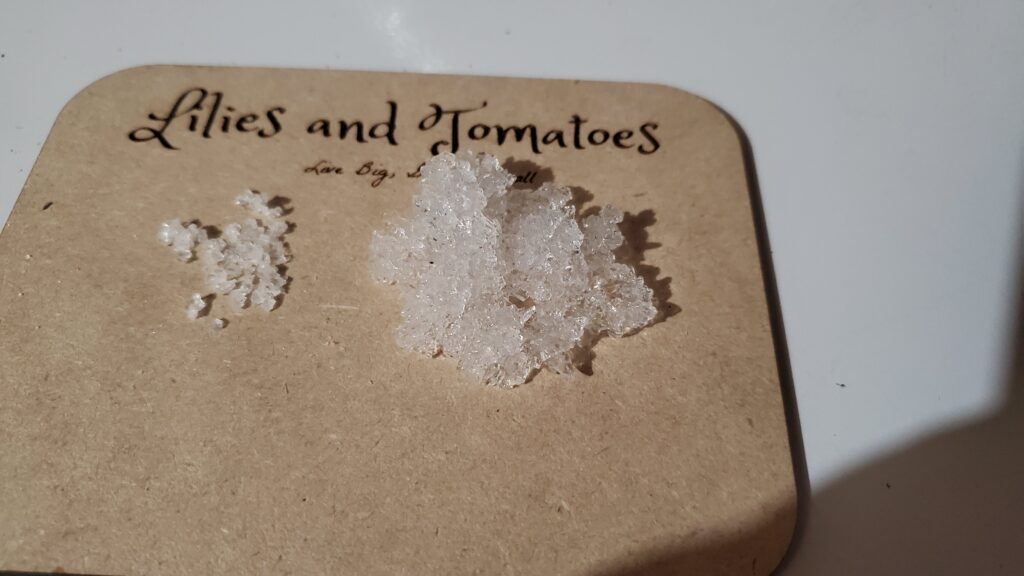
#5 Planting in the Understory
The final way that I will mention here is planting in the understory. What is the understory? It is the area close to the ground under your taller plants. This area of your garden is going to be shaded by larger plants. This is a good place to plant leafy greens and other shade-tolerant plants that do not get too tall.
For example: In September, your tomatoes will probably be quite large plants that cast shade in between and under. The in-between space is a great place to plant your fall lettuce. The lettuce will be shaded by the tomatoes until the fall.
How many of these tips do you use in your garden?
For more simple and practical gardening tips and tricks come over to Lilies and Tomatoes on Facebook. I teach a live class three days a week. Get your gardening questions answered live.



0 Comments